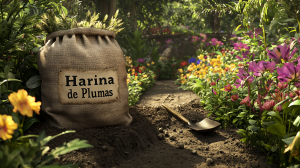Today we go with the guide to the cultivation of eggplant. The eggplant is of the genus Solanum and belongs to the Solanaceae family. That translated into common parlance means sun, sun and more sun. Solanum melongena L. has been known since 2,000 B.C. and its origin is said to be in Southeast Asia, where it coincides today with the countries that produce the most.
In Spain, the areas of greatest production are concentrated in the Mediterranean region, represented in order of importance in Almeria, Murcia, Alicante and Valencia.
WHEN AND HOW TO SOW
In the cultivation of eggplant, the requirements in terms of climate are very similar to those of bell pepper other Solanaceae, which means that it supports a very sunny climate with high temperatures. We can say that it is the vegetable with the highest temperature requirements, being able to withstand levels of up to 45º C.
Although this is certainly not the best, and the optimum development of the eggplant occurs with an average temperature between 20 and 25º C. In this temperature range is when the plant produces the best and most. That is why in late summer and early fall we see these solanaceae in full bloom.

As for the sowing, we recommend, first to do it in seedbed, to have a better control of the growth. And once the plant has about 3-4 true leaves, it is the ideal moment to transplant it to soil.
THE TRANSPLANT
In the Eggplant cultivation guide we are going to give you some tips for transplanting. Because its root system is vigorous, its soil requirements are ample and it is quite tolerant of any type of soil. A deep, loamy soil will provide optimal conditions for the development of eggplant crops.
Eggplants are undemanding in soil, due to the powerful development of roots, which deepen easily. Some problems may arise in clay soils, due to a possible root asphyxia, so we will have to take care of the amount of irrigation to avoid this problem. As for the pH, there is no problem as long as it is close to neutral (6 to 8).
Once we have this clear, it is time to transplant it to its definitive site.
IRRIGATION
Due to the hot conditions in which eggplant is grown, i.e. hot climate and many hours of sunshine, it requires a high water content, even though they have a powerful root system. Above all, irrigation should be taken into account during fruit formation.

So the ideal is to have a daily watering that ranges between 1.5 liters when the plant is growing and up to 3-5 liters when the plant is in production. As you can see the requirements are very similar to those of the other plants of its family.
EGGPLANT AND THE NEED FOR GUIDANCE OR TRELLISING
The eggplant plant is not a plant that is characterized by being a plant with a great height, but with a great production. And sometimes their fruits if we let them a little, can be of a considerable weight.
So we advise you to help the plant with a tutor. This will prevent the plant from twisting under the weight of the fruit and the fruit from coming into contact with the soil.

PRUNING OF EGGPLANT PLANTS
Here we go according to taste. From Cultivers we recommend you to do is to remove the buds that come out below about 50cm. This way we enhance the growth of the upper part and leave the lower part more free.
HOW AND WHEN TO HARVEST EGGPLANTS
Another point to keep in mind in the cultivation of eggplant and in which many people are overwhelmed. It’s okay to harvest the eggplants early, they don’t taste any worse in this case. Eggplant, like many other crops, is a plant that does not have an optimum ripening point, so to speak. It is not like melon or watermelon that if it is harvested before it tastes like nothing. Eggplant can be harvested in different sizes and is just as good. If harvested earlier, fewer seeds, if harvested later, more seeds. However, do not overdo it leaving it in the plant because then it can become a little bitter. You will kill it because it changes the usual color of its fruit.

As for how to harvest it, it is very simple, we can do it in two ways. We can pull the fruit against the shape of the curve of its peduncle, with care. Or we take a pair of scissors and cut. Here it is up to each one to choose.
The only thing left to do is to cook and taste this delicious fruit.
MOST COMMON DISEASES AND PESTS IN EGGPLANT GROWING
Here we are going to name the most common diseases and pests in the eggplant cultivation guide.
INSECTS IN EGGPLANT CULTIVATION
- Red and white spider mite (Tetranychus spp.) and (Polyphagotarsonemus latus Banks).
- Whitefly (Trialeurodes vaporariorum West, Bemisia tabaci Genn)
- Aphid (Myzus persicae, Aphis gossypii)
- Leafminer or submarine leafminer (Liriomyza spp.)
- Thrips (Frankliniella occidentalis) in eggplant cultivation.
- Nematodes (Meloidogyne spp.)
DISEASES IN EGGPLANT CULTIVATION
- Downy Mildew (Phytophthora nicotianae)
- Verticillium dahliae (Verticillium dahliae)
- Grey rot (Botrytis cinerea)
- Sclerotinia (Sclerotinia sclerotiorum)
- Alternaria (Alternaria solani)
PRODUCTS THAT WE RECOMMEND FOR THE CULTIVATION OF EGGPLANTS




OUR EGGPLANT SEEDS




